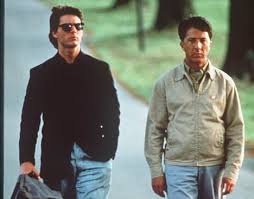Daniel
Goleman recently posted an interesting blog: Leaders:
Learn the Art and Science of Rapport.
In the blog Goleman quotes a landmark article by Robert Rosenthal and
Linda Tickle-Degnan that described the three essential ingredients for rapport:
1.
mutual attention,
2.
shared positive feeling, and
3.
synchrony or coordination.
Rapport doesn’t exist when only some of these elements are
present.
Goleman
then elaborates these factors in more detail:
1.
Mutual empathy is an indicator of rapport, where both
partners are aware of being experienced. There is a difference between social
ease and rapport. Social ease is comfortable, but we don’t feel that the other
person is tuned in to our feelings. Fully
attending to someone, seeing eye to eye, opens the possibility of empathy.
2.
You need more than attention for rapport, you also need
positive feelings toward each other. Such feelings are often shown nonverbally,
through tone of voice and facial expression. Skillful managers can give their
staff critical feedback while showing warm feelings nonverbally.
3.
Synchrony is the third element. When we are in rapport,
subtle nonverbal cues coordinate the pace and timing of conversations and body
movement. We become animated, our eyes meet often, the flow of our conversation
looks almost like a choreographed dance.
According to Goleman we have ‘oscillators,’ neural systems that act like
clocks, resetting over and over their rate of firing to coordinate with the
periodicity of an incoming signal.
What
can we do to intentionally build rapport with another person or within a team? Goleman suggests we fully listen. To do this we must give someone our full
attention. Put down the phone, look away from the computer monitor, and tune
into what the person is saying. Ask questions to understand the background situation.
For that time, focus on the other’s feelings and needs, not your own
preoccupations.
Good
advice but there is a much easier and better way. First you need to know the Humm-Wadsworth
components. We have all seven
components in our temperament but two are typically strong, three are average,
and two are weak. The golden rule of
life is we like those who are like ourselves.
So if you are dealing with someone who a strong component the same as
you then there is natural rapport. Act
naturally and you will both get along famously.
If
however there is no overlap the next thing to check for is personality
dissonance. Compare your two strong
components with the other persons and see if there is a problem.
Component: Risk Groups
Normal:
H, M, D
Hustler: N, D, E, A
Mover: N,
A, E
Doublechecker: H,
M
Artist:
H, M, P
Politician:
N, A, P
Engineer:
H, M
For
example I have a strong P and have high personality dissonance with High As. I have to leverage the strengths of my own
temperament and also recognise and respond in appropriate ways to other person’s
unique temperament. It takes a day to
learn how to this.
By the
way I hope you enjoyed the image. On the
left is the cover of The Humm Handbook: Lifting Your Level of Emotional
Intelligence written by me and published in June 2007. On the right is the logo of Julie Engel Manga,
Executive Coach, who wrote the following article in 2010 referenced by Goleman:
Action
Follows Attention, Part 2: Relationships. Imitation is the sincerest form of flattery.
And
finally thank you Rupert Bolton, one of my EQ coachees who alerted me to
Goleman’s article.


